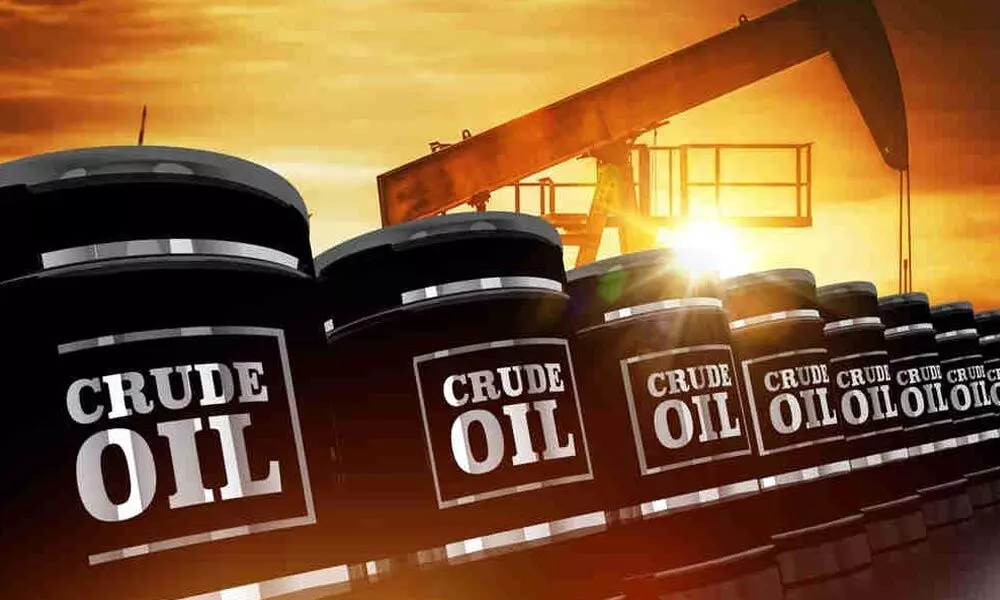Clean energy initiatives set to dampen demand for oil
World oil demand will reach 103.2m bbl/day in 2025, down 2.5m bbl/day from an estimate a year ago due to ‘demand shock’ caused by pandemic: IEA
image for illustrative purpose

In the IEA report, the world's oil production capacity is projected to increase by 5 million barrels per day (mbbl/day) by 2026. At the same time, the historic collapse in demand has resulted in a spare production capacity cushion of a record 9 mb/d that could keep global markets comfortable in the near term.
World oil demand will reach 103.2m bbl/day in 2025, down 2.5m bbl/day from an estimate a year ago, the International Energy Agency recently said, attributing the downward revision in part to the 'demand shock' caused by the coronavirus pandemic. The Paris-based agency also pointed to government policies shifting away from the use of fossil fuels, particularly in developed economies.
"The forecast for global oil demand has shifted lower, and demand could peak earlier than previously thought if a rising focus by governments on clean energy turns into stronger policies and behavioural changes induced by the pandemic become deeply rooted," the IEA said in a five-year outlook report.
Nevertheless, the IEA estimated oil demand to reach 104m bbl/day by 2026, up 4 per cent from 2019 levels, driven largely by Asia. "Asia will continue to dominate growth in global oil demand, accounting for 90 per cent of the increase between 2019 and 2026 in the IEA report's base case," the IEA report said.
"By contrast, demand in many advanced economies, where vehicle ownership and oil use per capita are much higher, is not expected to return to pre-crisis levels." The IEA forecast global oil production capacity to increase by 5 million barrels per day by 2026. "At the same time, the historic collapse in demand has resulted in a spare production capacity cushion of a record 9m bbl/day that could keep global markets comfortable in the near term."
According to IEA, India's medium-term outlook for natural gas consumption remains solid due to rising infrastructure and supportive environment policies. Industrial consumers are expected to account for 40 per cent of India's net demand growth. The demand is also expected to be driven by sectors such as residential, transport and energy. India's oil demand is projected to rise at the fastest pace in the world to reach 10 million barrels per day by 2030, from 5.05 million barrel per day in 2020.
Natural gas consumption is forecast to increase at a CAGR of 4.18 per cent to 143.08 million tonnes by 2040 from 58.10 million tonnes in 2018. Diesel demand in India is expected to double to 163 MT by 2029-30, with diesel and gasoline covering 58 per cent of India's oil demand by 2045. "Coal is the single largest source of global carbon emissions, and this year's historically high level of coal power generation is a worrying sign of how far off track the world is in its efforts to put emissions into decline towards net zero," said IEA
The growth of the world's capacity to generate electricity from solar panels, wind turbines and other renewable technologies is on course to accelerate over the coming years, with 2021 expected to set a fresh all-time record for new installations, the IEA says in a new report.
By 2026, global renewable electricity capacity is forecast to rise more than 60 per cent from 2020 levels to over 4 800 GW – equivalent to the current total global power capacity of fossil fuels and nuclear combined. Renewables are set to account for almost 95 per cent of the increase in global power capacity through 2026, with solar PV alone providing more than half.
It is forecast that oil and gas will account for 44 per cent of the world's primary energy supply in 2050, down from 53 per cent today. Investment will be needed to add new oil and gas production capacity, and to operate existing assets safely and sustainably over this period, to deliver output levels that can meet predicted demand. The world has a choice - stop developing new oil, gas and coal fields today or face a dangerous rise in global temperatures. "No new oil and natural gas fields are needed in our pathway," the IEA said. If the world were to follow that trajectory, oil prices would dwindle to just $25 a barrel by mid-century, from almost $70 now. Oil and natural gas output would become increasingly concentrated in a small number of low-cost producers, largely in the Organization of Petroleum Exporting Countries and the politically volatile Middle East, the IEA said. Yet falling prices would mean the fiscal budgets of these producer nations would still come under additional strain and consumers would remain exposed to risks of supply disruption despite the transition away from fossil fuels, the agency said.

